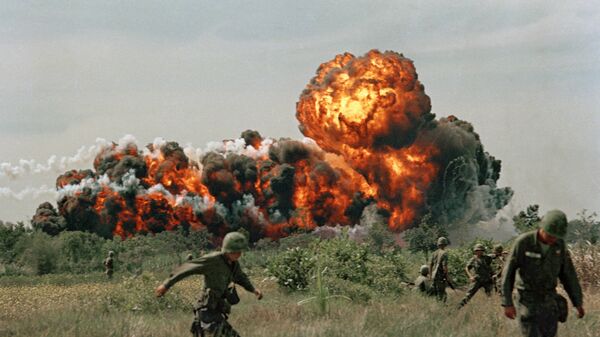The ordinance, a 105 mm howitzer shell, was discovered by farmers in Ta Luong, a village in Khanh Hoa Province in southern Vietnam. Ta Luong is less than 40 miles from Nha Trang Air Base, used by the US Air Force and Special Forces during the Vietnam War.
"The initial reason for the blast, which killed six, was that people were cutting open the 105 mm shell," reported the state-owned VGPNews. The ensuing explosion killed six, injured two, and knocked a house down, the report goes on to say.
One of the two injured, a child, was rushed to a hospital in nearby Cam Ranh. The provincial government has launched an investigation into the incident. The Vietnamese government claims that since the end of hostilities in 1975, over 42,000 people have been killed and over 62,100 injured by unexploded US ordnance.
The most common cause of detonation is farmers accidentally striking the bombs while tilling their fields, or villagers trying to dismantle the bombs to either salvage their metal casings to sell them as scrap, or their explosives to sell to fishermen.
The United States dropped more than 7.6 million tons of explosives onto Vietnam over the course of the war. By comparison, during World War II (a global conflict that was fought on four continents), the combined ordnance dropped was less than 2.2 million tons.
An estimated 10-30 percent of the dropped ordnance failed to detonate, with some provinces of Vietnam still mostly covered in unexploded ordnance. Since 1999, the United States has spent tens of millions of dollars to aid in the removal of unexploded ordnance in Vietnam, removing 290,000 pieces in total.
Neighboring Laos was also the subject of an intense bombing campaign by the United States during the Vietnam War. According to Legacies of War, an organization dedicated to raising awareness of the impact of the Vietnam War and US bombing campaigns on Laos, at least 50,000 Lao civilians had been killed or maimed by cluster bombs between 1964 and 2009.
The US has spent a relative pittance on mine clearance there, roughly $2 million per year compared to the roughly $13 million per year (in 2013 dollars) it spent to bomb the agrarian country.




